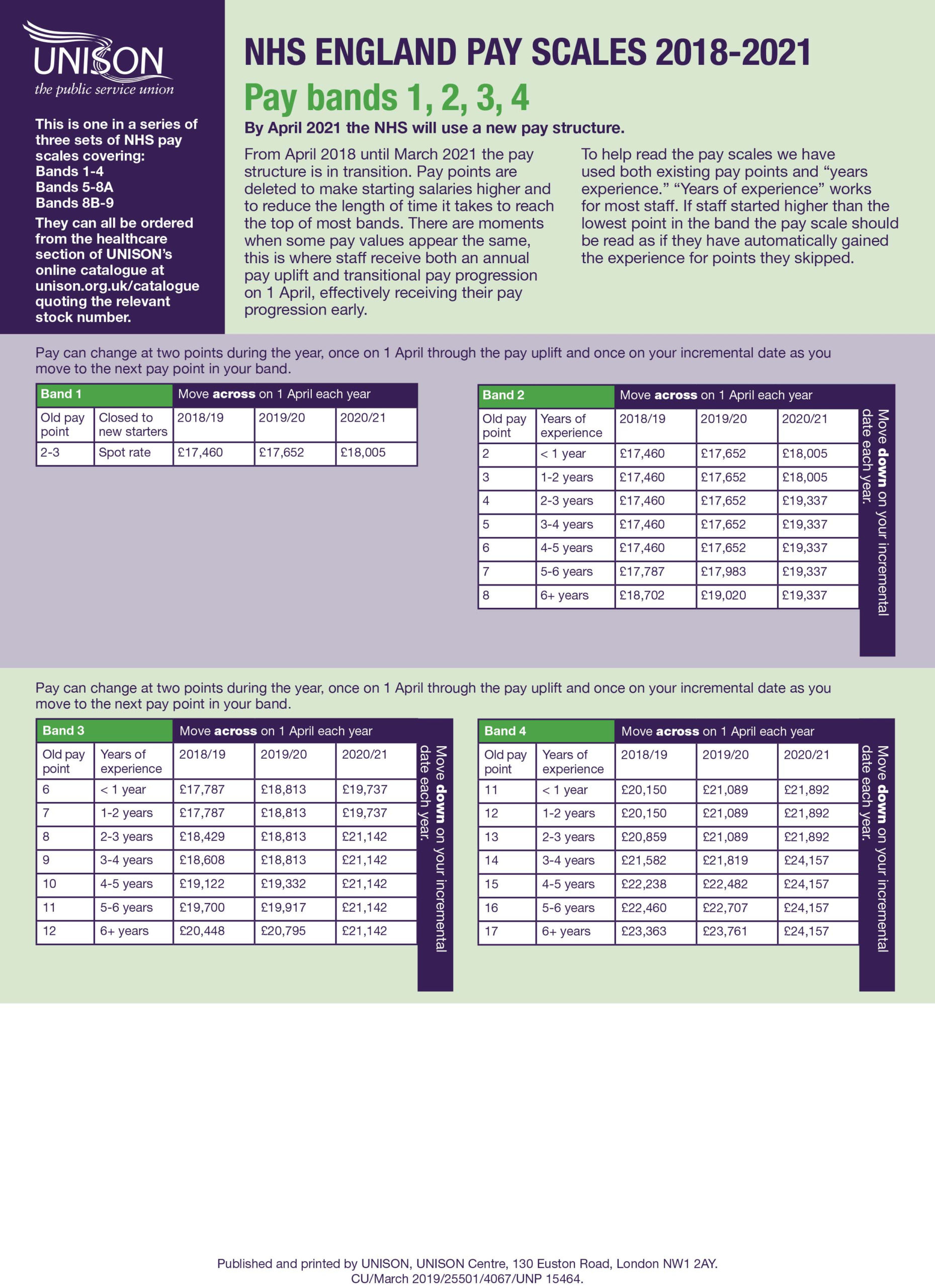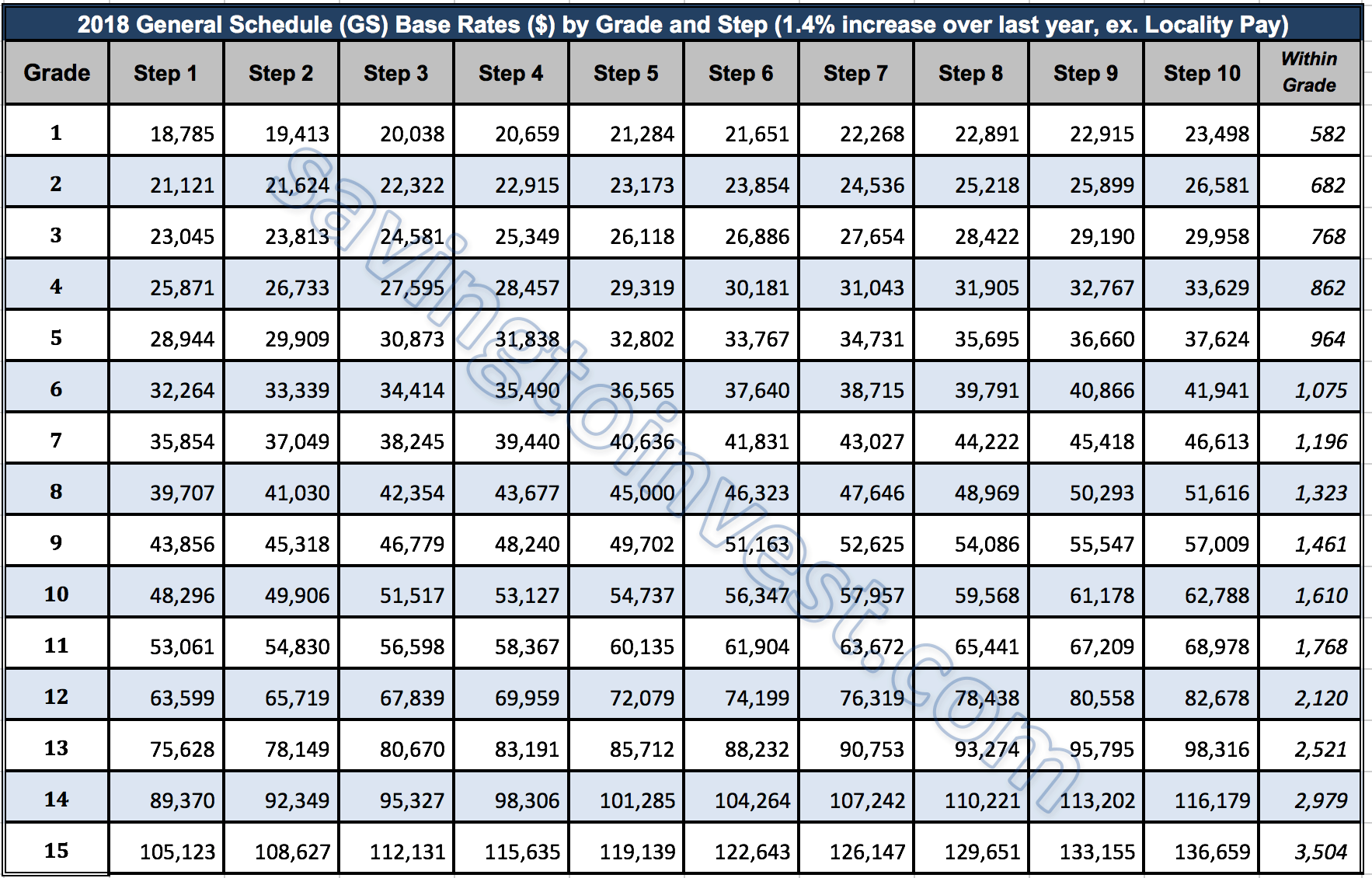GS Pay Scale: The Ultimate Guide To Understanding Federal Employee Salaries
Let's talk about GS pay scale, folks. If you're considering a career in the federal government or already working for Uncle Sam, understanding the General Schedule (GS) pay scale is crucial. It's like the backbone of federal compensation, and knowing how it works can make a huge difference in your financial planning. Whether you're a fresh graduate or a seasoned professional, this pay system affects millions of federal employees across the U.S.
Imagine walking into your first day at a federal job, and someone drops a bunch of acronyms on you—GS-7, GS-12, locality pay, step increases. It can feel overwhelming, right? But don't sweat it. In this article, we're breaking it all down for you, so you can understand exactly how much you'll be earning and what factors influence your paycheck.
Now, let's be real here. Money talks, and when it comes to federal employment, the GS pay scale is the language spoken. It's not just about the base salary; it's about the steps, the locality adjustments, and the potential for raises. So, buckle up because we're diving deep into the world of federal pay, and by the end of this, you'll be a pro at decoding those paychecks.
- George Michael Girlfriend The Untold Stories Behind His Relationships
- Dr Jeff Vet Dies A Heartfelt Tribute To A Beloved Veterinarian
What Exactly is the GS Pay Scale?
Alright, let's start with the basics. The GS pay scale, or General Schedule, is the federal government's pay structure for white-collar employees. It was created to ensure fairness and consistency in salaries across different roles and locations. Think of it as a standardized system that helps level the playing field for federal workers.
Here's the deal: the GS pay scale is divided into 15 grades, ranging from GS-1 to GS-15. Each grade represents a level of responsibility and experience. For instance, a GS-1 position is typically for entry-level jobs, while a GS-15 is for senior-level positions. And within each grade, there are 10 steps, allowing employees to gradually increase their pay as they gain experience and perform well.
But wait, there's more! The GS pay scale isn't just about the base salary. It also takes into account locality pay, which adjusts salaries based on the cost of living in different areas. This means that a GS-12 in New York City will earn more than a GS-12 in a smaller town. Makes sense, right? After all, living expenses vary greatly depending on where you are.
- Is Joan Tyson Still Alive Unveiling The Truth About The Iconic Figure
- Celtic Thunder Ryan Kelly Wife The Love Story Behind The Spotlight
Breaking Down the GS Grades and Steps
Understanding the GS Grades
So, we've got these 15 grades, and each one corresponds to a specific level of responsibility. Here's a quick rundown:
- GS-1 to GS-4: Entry-level positions, often for clerical or support roles.
- GS-5 to GS-7: Mid-level positions, usually for employees with some experience or education.
- GS-8 to GS-12: Professional roles, requiring advanced degrees or significant experience.
- GS-13 to GS-15: Senior-level positions, often managerial or highly specialized roles.
As you move up the grades, the salaries increase significantly. For example, a GS-5 employee might start at around $30,000 annually, while a GS-15 can earn well over $100,000. It's a pretty sweet deal if you're climbing the career ladder.
Steps Within Each Grade
Now, let's talk about those steps. Each grade has 10 steps, and moving up a step usually results in a 3% increase in pay. But here's the catch: you don't automatically move up. You typically need to demonstrate satisfactory performance and meet certain time-in-grade requirements. For instance, moving from Step 1 to Step 2 might take a year, but moving from Step 7 to Step 8 could take three years.
It's like leveling up in a video game, but instead of collecting coins, you're collecting experience points. And trust me, those pay bumps feel just as rewarding as beating the final boss.
Locality Pay: Why Location Matters
Okay, here's where things get interesting. Locality pay is a crucial component of the GS pay scale. It accounts for the differences in cost of living across the country. For example, if you're working in San Francisco, you'll receive a higher locality pay adjustment compared to someone in Des Moines, Iowa. It's all about making sure federal employees can afford to live comfortably wherever they're stationed.
Currently, there are over 40 locality pay areas, each with its own percentage adjustment. Some of the highest-paying areas include the San Francisco Bay Area, New York City, and Washington, D.C. On the flip side, smaller cities and rural areas have smaller adjustments, but they also tend to have lower living costs.
Think of it as a balancing act. The government wants to attract top talent to all regions, so they adjust salaries accordingly. It's a win-win for everyone involved.
How to Determine Your Pay Grade
Education and Experience
Your pay grade is largely determined by your education and experience. For example, a recent college graduate might start at GS-5 or GS-7, depending on their degree and field of study. On the other hand, someone with years of experience in a specialized field might enter at a higher grade, like GS-11 or GS-12.
Here's a pro tip: If you're negotiating your starting grade, make sure to highlight any relevant certifications, internships, or projects that showcase your skills. It could make a big difference in where you start on the pay scale.
Job Classification
Each federal job is classified into a specific grade based on its duties and responsibilities. This classification process involves evaluating the complexity of the work, the level of supervision required, and the qualifications needed. It's a pretty thorough process to ensure that everyone is paid fairly for their contributions.
So, if you're applying for a federal job, pay close attention to the job announcement. It will clearly state the grade and pay range for the position. This way, you'll know exactly what to expect before you even accept the offer.
Understanding Step Increases
Step increases are like little rewards for sticking around and doing a good job. As mentioned earlier, moving up a step usually results in a 3% pay increase. But here's the thing: you don't get these increases automatically. You need to meet certain criteria, such as satisfactory performance reviews and time-in-grade requirements.
For example, moving from Step 1 to Step 2 might take a year, but moving from Step 7 to Step 8 could take three years. It's a gradual process, but one that can significantly boost your earning potential over time. Think of it as a long-term investment in your career.
And let's not forget about within-grade increases. These are automatic pay bumps that occur every one to three years, regardless of performance. It's like a little bonus for just being awesome at your job.
How the GS Pay Scale Compares to Private Sector
Now, let's compare apples to apples—or in this case, federal paychecks to private sector salaries. The GS pay scale is often considered competitive, especially when you factor in benefits like health insurance, retirement plans, and paid leave. But how does it stack up against private sector jobs?
Well, it depends on the industry and location. In some cases, federal employees earn less than their private sector counterparts, especially in high-paying fields like technology or finance. However, federal jobs often offer more job security, better benefits, and a more stable work environment. Plus, the GS pay scale is transparent and predictable, which can be a huge plus for some people.
Ultimately, it comes down to what you value more: higher pay or job stability. For many, the federal government offers the perfect balance.
Impact of Budgets and Politics on GS Pay Scale
Let's face it: the federal budget and political climate can have a big impact on the GS pay scale. Every year, Congress decides on the federal budget, which includes pay raises for federal employees. Sometimes, they approve a cost-of-living adjustment (COLA), which means everyone gets a little bump in their salary. Other times, they freeze pay increases altogether.
It's a bit of a rollercoaster ride, but the good news is that federal employees are usually protected from massive pay cuts. The government understands the importance of maintaining a skilled workforce, so they try to keep salaries competitive even during tough economic times.
That said, it's always a good idea to stay informed about budget negotiations and political developments that could affect your paycheck. Knowledge is power, after all.
Future of the GS Pay Scale
Looking ahead, there's a lot of talk about reforming the GS pay scale. Some argue that it's outdated and doesn't accurately reflect the skills and experience of modern federal employees. Others believe that it's still a fair and effective system that ensures pay equity across the board.
One potential change is moving towards a pay-for-performance model, where employees are rewarded based on their individual contributions rather than their grade and step. This could create more opportunities for advancement, but it also raises concerns about fairness and consistency.
Whatever the future holds, one thing is certain: the GS pay scale will continue to evolve to meet the needs of federal employees and the government as a whole.
Conclusion: Taking Action
So, there you have it—the lowdown on the GS pay scale. Whether you're just starting out or climbing the career ladder, understanding how this system works can help you make informed decisions about your career. Remember, it's not just about the base salary; it's about the steps, the locality pay, and the potential for raises.
Now, here's where you come in. If you found this article helpful, don't forget to share it with your friends and colleagues. And if you have any questions or comments, feel free to drop them below. We'd love to hear from you!
Oh, and before you go, check out some of our other articles on federal employment. We've got everything from job search tips to retirement planning. Stay informed, stay ahead, and keep climbing that career ladder!
Table of Contents
- What Exactly is the GS Pay Scale?
- Breaking Down the GS Grades and Steps
- Locality Pay: Why Location Matters
- How to Determine Your Pay Grade
- Understanding Step Increases
- How the GS Pay Scale Compares to Private Sector
- Impact of Budgets and Politics on GS Pay Scale
- Future of the GS Pay Scale
- Conclusion: Taking Action
- Talissa Smalley Rising Star In The Spotlight
- Unveiling Michael Phelps Ethnicity A Journey Beyond The Records

Gs 2024 Payscale Katie Meaghan

2025 Gs Pay Scale Layla Sodersten A.

2023 Gs Pay Scale Washington Dc